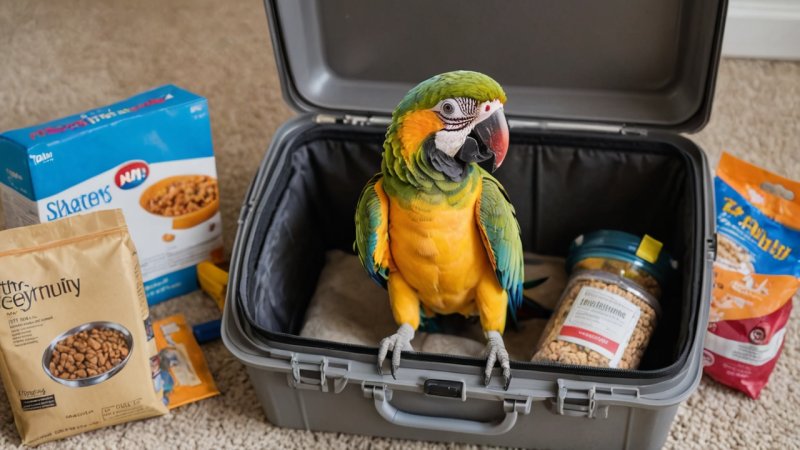Traveling can be an exhilarating experience, but when you have exotic pets, the planning process can become quite complex. Whether you own a vibrant parrot, a curious hedgehog, or a slithering snake, transporting these unique companions requires careful consideration and preparation. Understanding the regulations, requirements, and best practices for traveling with exotic pets is essential for ensuring a smooth journey. In this article, we will explore the key aspects of traveling with exotic pets, including legal considerations, packing essentials, and tips for a stress-free travel experience.
Understanding Legal Considerations
Before you embark on your journey, it is crucial to familiarize yourself with the legalities of traveling with exotic pets. Different countries and even states within countries have varying regulations regarding the import and export of exotic animals. Many destinations may have restrictions or require permits for certain species, so it’s essential to check the local laws of your destination well in advance.
In the United States, the Animal and Plant Health Inspection Service (APHIS) regulates the transport of animals across state lines and international borders. Always ensure that your pet is legal to own in both your current location and the destination. Additionally, consider contacting the embassy or consulate of the country you plan to visit for specific guidelines regarding exotic pets.
Health and Safety Preparations
Ensuring your exotic pet’s health and safety during travel is paramount. Begin by scheduling a check-up with a veterinarian who specializes in exotic animals. This visit may include vaccinations, health certificates, and advice on how to manage your pet's well-being while traveling. Some airlines and countries require a health certificate issued by a veterinarian, confirming that your pet is fit for travel.
Also, consider whether your pet is accustomed to travel. For some exotic pets, the experience of being in a moving vehicle or airplane can be stressful. Gradually acclimating your pet to travel can help ease anxiety. You can start with short trips around your home and gradually increase the duration to help them adapt to the experience.
Choosing the Right Travel Carrier
A suitable travel carrier is crucial for your pet's comfort and safety. When selecting a carrier, consider the size, ventilation, and security features. It should be spacious enough for your pet to move comfortably but not so large that they can be tossed around during travel. Ensure that it has proper ventilation and is secure enough to prevent any escape attempts.
For pets like reptiles, a sturdy container with temperature control may be necessary. For birds, a travel cage with perches and toys can help keep them calm. Always line the bottom of the carrier with absorbent material to manage any accidents and provide comfort.
Packing Essentials for Your Exotic Pet
Just like you wouldn’t travel without your essentials, your exotic pet also requires specific items to ensure their comfort and care. Here’s a checklist of essential items to pack:
- Food and Water: Bring enough of your pet’s regular food for the duration of your trip, along with a portable water dish.
- Health Records: Keep your pet's health certificate and vaccination records accessible.
- Comfort Items: Bring familiar toys, blankets, or bedding to help reduce stress.
- Leash or Harness: If your pet is accustomed to being walked, a leash or harness is essential.
- First Aid Kit: A small first aid kit tailored to your pet’s needs can be invaluable in emergencies.
Traveling by Air with Exotic Pets
Air travel can be particularly challenging for exotic pets, so it’s vital to check with your airline about their specific policies regarding pet travel. Many airlines allow pets in the cabin if they meet size requirements, while others may require them to travel in the cargo hold. Ensure you book your flight early and inform the airline that you will be traveling with an exotic pet.
When preparing for air travel, avoid feeding your pet right before the flight to prevent motion sickness. Instead, provide a light meal several hours before departure. Additionally, keep your pet’s travel carrier easily accessible and ensure that they feel secure inside it.
Road Trips with Exotic Pets
For those opting for a road trip, there are various considerations to ensure a smooth journey. Ensure frequent stops to allow your pet to stretch and relieve themselves. Always keep your exotic pet secured in their travel carrier during the drive to avoid distractions and potential accidents.
It's also wise to research pet-friendly accommodations along your route, as not all hotels and lodging options accept exotic pets. Calling ahead to confirm their policies can save you time and hassle.
Unique Experiences with Exotic Pets
Traveling with your exotic pet can open doors to unique experiences that you may not have otherwise encountered. Many destinations offer pet-friendly attractions, such as parks, beaches, and outdoor activities where you can bond with your pet. Additionally, some travel companies specialize in pet-friendly tours and accommodations, allowing you to explore new places together.
Participating in local events or festivals that welcome pets can also provide memorable experiences. From dog-friendly beaches to exotic pet expos, there are numerous opportunities to enjoy time with your pet while discovering new places.
Conclusion
Traveling with exotic pets presents unique challenges and rewards. By understanding the legal considerations, prioritizing health and safety, choosing the right travel carrier, and packing essential items, you can ensure a smooth journey for both you and your pet. Whether traveling by air or embarking on a road trip, the key is preparation and awareness of your pet's needs. With the right planning, your exotic pet can accompany you on your adventures, creating unforgettable memories along the way.






